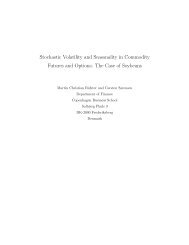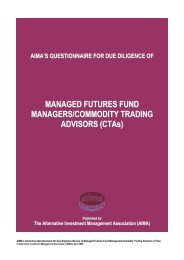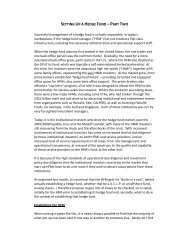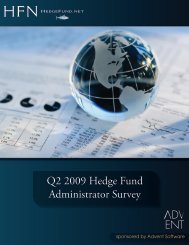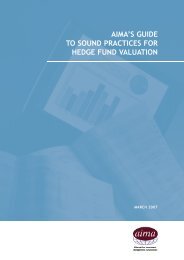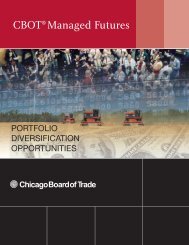Lintner Revisited: A Quantitative Analysis of Managed ... - CME Group
Lintner Revisited: A Quantitative Analysis of Managed ... - CME Group
Lintner Revisited: A Quantitative Analysis of Managed ... - CME Group
You also want an ePaper? Increase the reach of your titles
YUMPU automatically turns print PDFs into web optimized ePapers that Google loves.
cmegroup.com<br />
BENEFITS TO INSTITUTIONAL INVESTORS<br />
<strong>Managed</strong> futures provide institutional investors with a variety<br />
<strong>of</strong> liquid, transparent investment programs that do not exhibit<br />
correlation to traditional or alternative investments, and<br />
<strong>of</strong>tentimes, one another. Though not a hedge, they <strong>of</strong>ten provide<br />
robust performance in unfavorable environments for equities<br />
and most alternative investments. The exchange-listed nature <strong>of</strong><br />
the underlying instruments traded facilitates risk management<br />
and mitigates many <strong>of</strong> the dangers associated with model risk.<br />
Additionally, institutional investors who access the space via<br />
separately managed accounts substantially minimize operational<br />
risks and the possibility <strong>of</strong> fraud, maintain custody <strong>of</strong> assets, and<br />
have access to full transparency <strong>of</strong> positions. This section attempts<br />
to shed insight into other intrinsic features <strong>of</strong> managed futures<br />
which enable institutional investors to capitalize on these desirable<br />
characteristics.<br />
Rather than allowing cash to sit idle, many futures investors prefer<br />
to deploy part <strong>of</strong> this cash to increase their trading level and<br />
notional exposure. For instance, if an investor buys a theoretical<br />
futures contract with a notional value <strong>of</strong> $100,000 and a margin<br />
requirement <strong>of</strong> $10,000, $10,000 will be deployed as margin and<br />
$90,000 will remain in cash. If the investor chooses to do so, he<br />
could double his notional exposure from $100,000 to $200,000<br />
by posting an additional $10,000 as margin on the purchase <strong>of</strong><br />
a second futures contract. The investor now holds a notional<br />
position <strong>of</strong> $200,000 on his $100,000 cash. This position will be<br />
able to withstand losses <strong>of</strong> 40 percent before all <strong>of</strong> the investor’s<br />
cash is consumed, triggering a margin call (a 40 percent loss on<br />
two $100,000 contracts equals $80,000. Any losses surpassing this<br />
level would dip below the margin requirement on this position <strong>of</strong><br />
$20,000).<br />
One <strong>of</strong> the unique advantages managed futures <strong>of</strong>fer institutional<br />
investors is the ability to notionally fund investments, allowing<br />
investors to efficiently deploy cash to gain increased exposure or<br />
for allocation elsewhere in the portfolio. Due to the low margin<br />
requirements for most futures contracts, only a small fraction <strong>of</strong><br />
the cash deposited at the manager’s futures commission merchant<br />
is deployed as margin for trading. The remainder sits in cash<br />
equivalent instruments, earning interest and serving as a reserve<br />
in the event <strong>of</strong> trading losses.<br />
30<br />
Past performance is not necessarily indicative <strong>of</strong> future results.



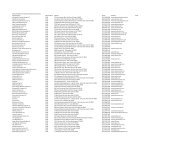
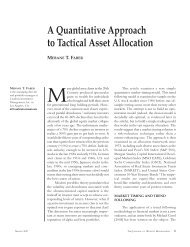
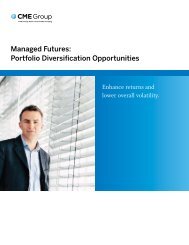
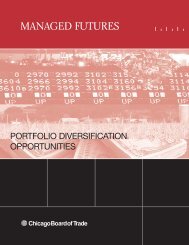
![Definitions & Concepts... [PDF] - Cycles Research Institute](https://img.yumpu.com/26387731/1/190x245/definitions-concepts-pdf-cycles-research-institute.jpg?quality=85)
